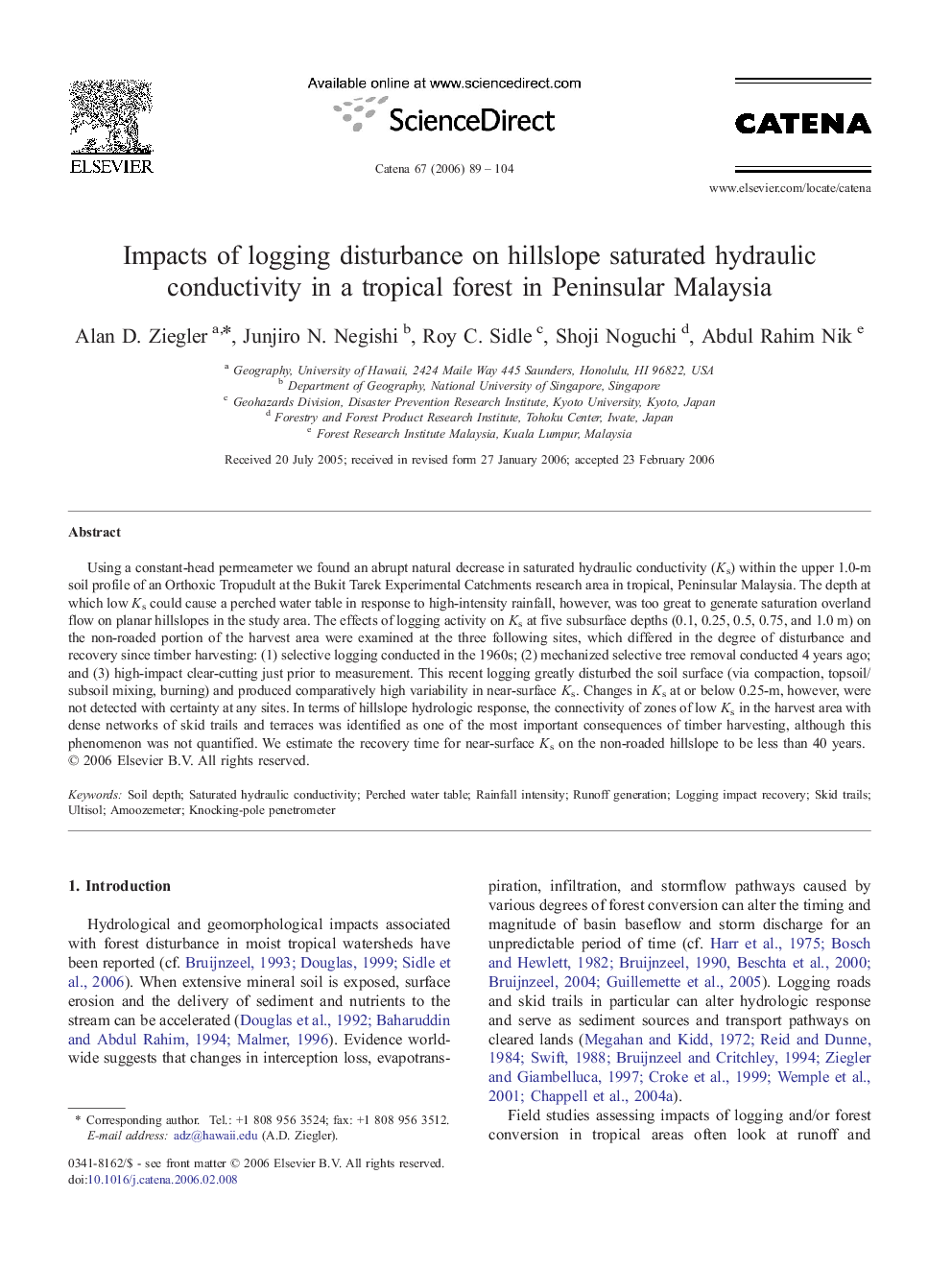| Article ID | Journal | Published Year | Pages | File Type |
|---|---|---|---|---|
| 4572699 | CATENA | 2006 | 16 Pages |
Using a constant-head permeameter we found an abrupt natural decrease in saturated hydraulic conductivity (Ks) within the upper 1.0-m soil profile of an Orthoxic Tropudult at the Bukit Tarek Experimental Catchments research area in tropical, Peninsular Malaysia. The depth at which low Ks could cause a perched water table in response to high-intensity rainfall, however, was too great to generate saturation overland flow on planar hillslopes in the study area. The effects of logging activity on Ks at five subsurface depths (0.1, 0.25, 0.5, 0.75, and 1.0 m) on the non-roaded portion of the harvest area were examined at the three following sites, which differed in the degree of disturbance and recovery since timber harvesting: (1) selective logging conducted in the 1960s; (2) mechanized selective tree removal conducted 4 years ago; and (3) high-impact clear-cutting just prior to measurement. This recent logging greatly disturbed the soil surface (via compaction, topsoil/subsoil mixing, burning) and produced comparatively high variability in near-surface Ks. Changes in Ks at or below 0.25-m, however, were not detected with certainty at any sites. In terms of hillslope hydrologic response, the connectivity of zones of low Ks in the harvest area with dense networks of skid trails and terraces was identified as one of the most important consequences of timber harvesting, although this phenomenon was not quantified. We estimate the recovery time for near-surface Ks on the non-roaded hillslope to be less than 40 years.
